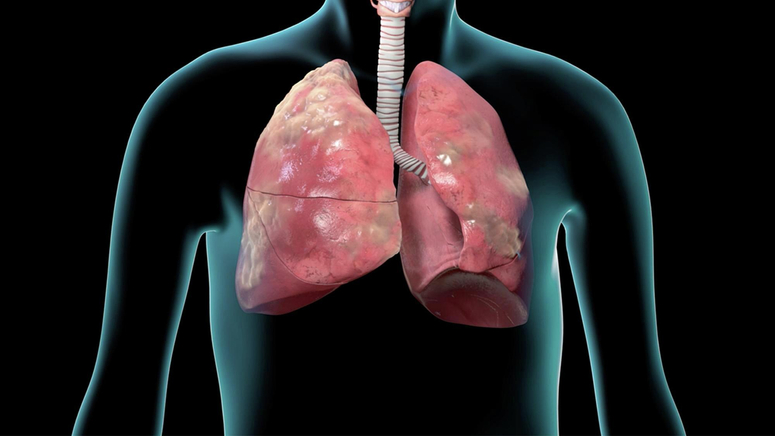
Feng Xu, Dragoş M. Vasilescu, Daisuke Kinose, Naoya Tanabe, Kevin W. Ng, Harvey O. Coxson, Joel D. Cooper, Tillie-Louise Hackett, Stijn E. Verleden, Bart M. Vanaudenaerde, Christopher S. Stevenson, Marc E. Lenburg, Avrum Spira, Wan C. Tan, Don D. Sin, Raymond T. Ng, James C. Hogg
European Respiratory Journal 2022 59: 2101411; DOI: 10.1183/13993003.01411-2021
Abstract
Rationale Peripheral airway obstruction is a key feature of chronic obstructive pulmonary disease (COPD), but the mechanisms of airway loss are unknown. This study aims to identify the molecular and cellular mechanisms associated with peripheral airway obstruction in COPD.
Methods Ten explanted lung specimens donated by patients with very severe COPD treated by lung transplantation and five unused donor control lungs were sampled using systematic uniform random sampling (SURS), resulting in 240 samples. These samples were further examined by micro-computed tomography (CT), quantitative histology and gene expression profiling.
Results Micro-CT analysis showed that the loss of terminal bronchioles in COPD occurs in regions of microscopic emphysematous destruction with an average airspace size of ≥500 and <1000 µm, which we have termed a “hot spot”. Based on microarray gene expression profiling, the hot spot was associated with an 11-gene signature, with upregulation of pro-inflammatory genes and downregulation of inhibitory immune checkpoint genes, indicating immune response activation. Results from both quantitative histology and the bioinformatics computational tool CIBERSORT, which predicts the percentage of immune cells in tissues from transcriptomic data, showed that the hot spot regions were associated with increased infiltration of CD4 and CD8 T-cell and B-cell lymphocytes.
Interpretation The reduction in terminal bronchioles observed in lungs from patients with COPD occurs in a hot spot of microscopic emphysema, where there is upregulation of IFNG signalling, co-stimulatory immune checkpoint genes and genes related to the inflammasome pathway, and increased infiltration of immune cells. These could be potential targets for therapeutic interventions in COPD.
In COPD, terminal bronchiole destruction begins in regions of microscopic emphysema that cannot be visualised by routine thoracic CT. The over-activation of inflammatory immune responses in the diseased region might be the cause of the destruction. https://bit.ly/3l7BGNB
Footnotes
-
This article has an editorial commentary: https://doi.org/10.1183/13993003.00418-2022
-
Author contributions: F. Xu designed and performed the bioinformatic analysis and wrote the manuscript. D.M. Vasilescu, D. Kinose and N. Tanabe processed the explanted lung samples. D.M. Vasilescu performed micro-CT imaging and analysis. D. Kinose performed tissue preparation for histology and analysis of immunohistochemistry. M.E. Lenburg and A. Spira performed the RNA analyses. K.W. Ng, H.O. Coxson and R.T. Ng contributed the analysis and revised the manuscript. J.D. Cooper, T-L. Hackett, S.E. Verleden, B.M. Vanaudenaerde, C.S. Stevenson, M.E. Lenburg, A. Spira, W.C. Tan and D.D. Sin gave comments and revised the manuscript. F. Xu, D.M. Vasilescu and J.C. Hogg conceived the study and revised the manuscript. All authors have read and approved the final manuscript.
-
Conflict of interest: F. Xu has nothing to disclose.
-
Conflict of interest: D.M. Vasilescu has nothing to disclose.
-
Conflict of interest: D. Kinose has nothing to disclose.
-
Conflict of interest: N. Tanabe has nothing to disclose.
-
Conflict of interest: K.W. Ng has nothing to disclose.
-
Conflict of interest: H.O. Coxson has nothing to disclose.
-
Conflict of interest: J.D. Cooper has nothing to disclose.
-
Conflict of interest: T-L. Hackett has nothing to disclose.
-
Conflict of interest: S.E. Verleden has nothing to disclose.
-
Conflict of interest: B.M. Vanaudenaerde has nothing to disclose.
-
Conflict of interest: C.S. Stevenson reports other (salary) from Johnson and Johnson, outside the submitted work.
-
Conflict of interest: M.E. Lenburg reports grants from Genentech, during the conduct of the study and other (stock) from Metera Pharmaceuticals, outside the submitted work.
-
Conflict of interest: A. Spira is an employee of Johnson and Johnson.
-
Conflict of interest: W.C. Tan reports personal fees for advisory board work from GlaxoSmithKline, Canada, and AstraZenenca, Canada, outside the submitted work.
-
Conflict of interest: D.D. Sin reports grants and personal fees for lectures from AstraZeneca and personal fees for lectures from Boehringer Ingelheim, outside the submitted work.
-
Conflict of interest: R.T. Ng has nothing to disclose.
-
Conflict of interest: J.C. Hogg reports grants from Genentech, Johnson and Johnson Corporation, Canadian Institute of Health Research, US National Institutes of Health, Katholieke Universiteit Leuven, Parker B Francis Foundation, St Paul's Hospital Foundation, BCLUNG Association and BC Heart and Stroke Foundation, during the conduct of the study.
-
Support statement: This study was funded by a Canadian Institutes of Health Research (CIHR) operating grant MOP 130504 and an investigator-led grant from Johnson & Johnson. Funding information for this article has been deposited with the Crossref Funder Registry.
- Received December 22, 2020.
- Accepted September 27, 2021.
- Copyright ©The authors 2022. For reproduction rights and permissions contact permissions@ersnet.org














